How can nature provide one third of the worlds electricity needs?
Have you ever wondered why people are so keen on wind power? When you think of wind power what is the first thing you think of? I think of tulips, now I can hear you asking why tulips? The reason behind this is the windmills that Holland are famous for are usually accompanied by fields of beautiful brightly coloured tulips in every colour imaginable. Tulips in my mind will always be associated with wind turbines and the power that nature can provide. In today’s blog we are going to look at how nature provides windpower, how wind turbines are made and how composites and adhesives fit into all of this. Then we are going on a windswept tour of some of the biggest off-shore wind farms in the world, did you know one is situated where they found some old unexploded bombs from the World War II. To find out come join us on our breeziest blog yet!
So, what exactly is wind power and how do we harness it?
Wind power has been around for centuries and has been used for many things such as sailing boats and grinding corn just for starters. It was extensively used throughout the centuries as it was widely available and it was a free resource that everyone could make use of. With the advancement of the technologies of today wind power has made leaps and bounds from previous centuries through the development of wind turbines. Wind turbines harnesses air flow through spinning the blades which then turns a shaft that is connected to a generator which produces electricity. These turbines can be as tall as a 20-story building and have up to 60-meter-long blades. It is a clean source of renewable energy as it produces no pollution.
The production of wind turbines has come a long way since the first known wind turbine was built in Scotland in 1887. This was a 10m high cloth-sailed wind turbine which was installed in the garden of Prof James Blyth of Anderson’s College in Glasgow. It was used to power the lighting in his holiday cottage. Technology has moved on a lot since then and turbine manufacturers have embraced the use of carbon fiber in the manufacturing process of wind turbines. It is used in specifically selected structural parts of the blades as it makes the blades lighter which means less robust turbine and tower components are required. The higher stiffness and lower density of carbon fibre allows a thinner blade profile while producing stiffer, lighter blades. Furthermore, the excellent fatigue resistance of fibre-reinforced plastics helps to minimize material degradation and maintenance costs over the 20-year design life span.
So how do our adhesives fit into all of this?
Our adhesive not only can be used in the manufacturing process but can also be used in structural repairs and maintenance. You also don’t need to invest in any automated machinery/system at the beginning. All our 500ml aerosol and 22LTR are portable / independent systems. As our systems don’t require any electricity to use them, if you need an easy portable system for offshore structural repairs and maintenance these are easy to travel with. Finally, they are easy to maintain, clean and use which makes them a lot more cost effective on a large scale than alternative methods.
Lets get to the windy part now, there are two types of wind farms off-shore and land based but for today’s blog we are going to look at offshore wind farms. Off-shore wind power is the use of wind farms in the sea to harvest wind energy. The advantages of using offshore sites is the higher wind speeds off the coasts and unlike wind over land, offshore breezes can be strong in the afternoon, matching the time when people are using the most electricity. They can also be located close to the large cities eliminating the need for long-distance transmission lines.
So what are the biggest off-shore wind farms in the world?
We took a look at the windiest places in the world, why not join us on our windy countdown!
First up is London Array
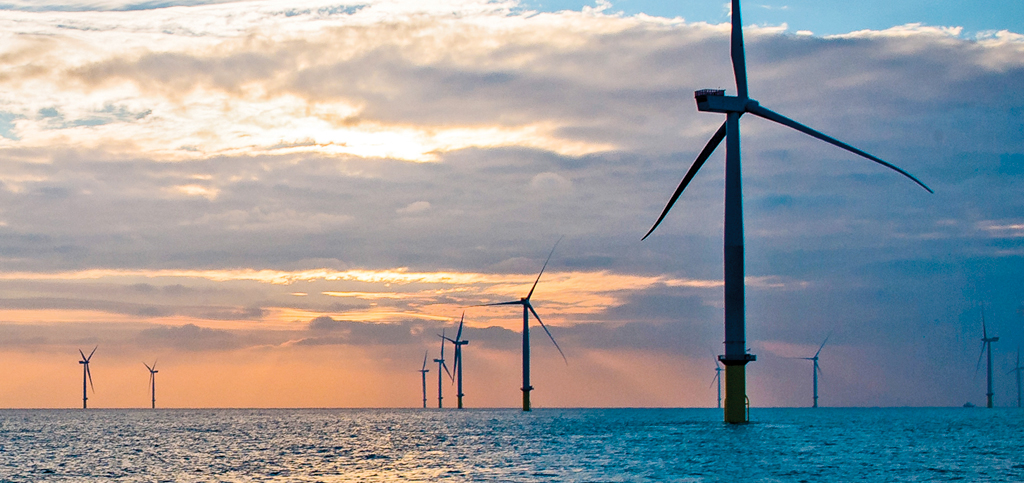 This is the biggest offshore wind farm in the world and has a capacity of 630MW. The wind farm is located 20 kilometers off the Kent coast in England and is named after London because the power goes to the London grid.
This is the biggest offshore wind farm in the world and has a capacity of 630MW. The wind farm is located 20 kilometers off the Kent coast in England and is named after London because the power goes to the London grid.
London Array Limited is owned by a consortium of three world-leading renewable energy companies: E.ON (30%), DONG Energy (25%) and Masdar (20%) – and La Caisse de dépôt et placement du Québec (25%), a global investor. Their combined experience and expertise help ensure the continuing success of the wind farm. Phase One of London Array generates enough energy to power around 500,000 British homes and is equivalent to taking nearly 300,000 cars off the road each year.
Gemini Wind Farm
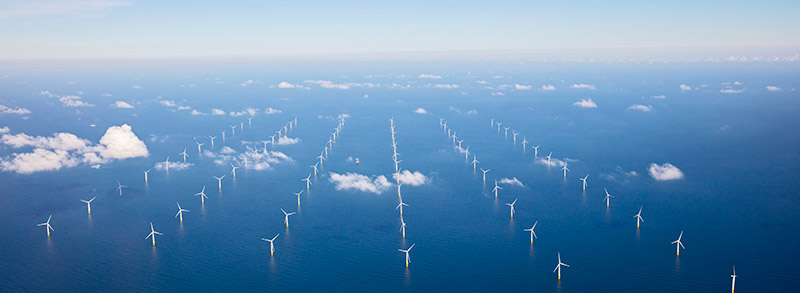 Next up is Gemini wind farm which as an offshore wind farm in the Dutch part of the North Sea and has a total capacity of 600 MegaWatts. Gemini is built on two closely situated locations, the first part with 75 turbines is located north of Ameland. The second part also with 75 turbines is located 55 kilometers north of Schiermonnikoog and this is where the name Gemini = twins comes from. The official names of the locations are Offshore and Sea energy. Gemini generates energy in the part of the North Sea where the highest and most constant wind speeds in the world are reached. The wind farm consists of two parts. The 150 wind turbines are Siemens SWT-4.0, each with a capacity of 4 megawatts.[3][4]
Next up is Gemini wind farm which as an offshore wind farm in the Dutch part of the North Sea and has a total capacity of 600 MegaWatts. Gemini is built on two closely situated locations, the first part with 75 turbines is located north of Ameland. The second part also with 75 turbines is located 55 kilometers north of Schiermonnikoog and this is where the name Gemini = twins comes from. The official names of the locations are Offshore and Sea energy. Gemini generates energy in the part of the North Sea where the highest and most constant wind speeds in the world are reached. The wind farm consists of two parts. The 150 wind turbines are Siemens SWT-4.0, each with a capacity of 4 megawatts.[3][4]
Gode Wind Farm
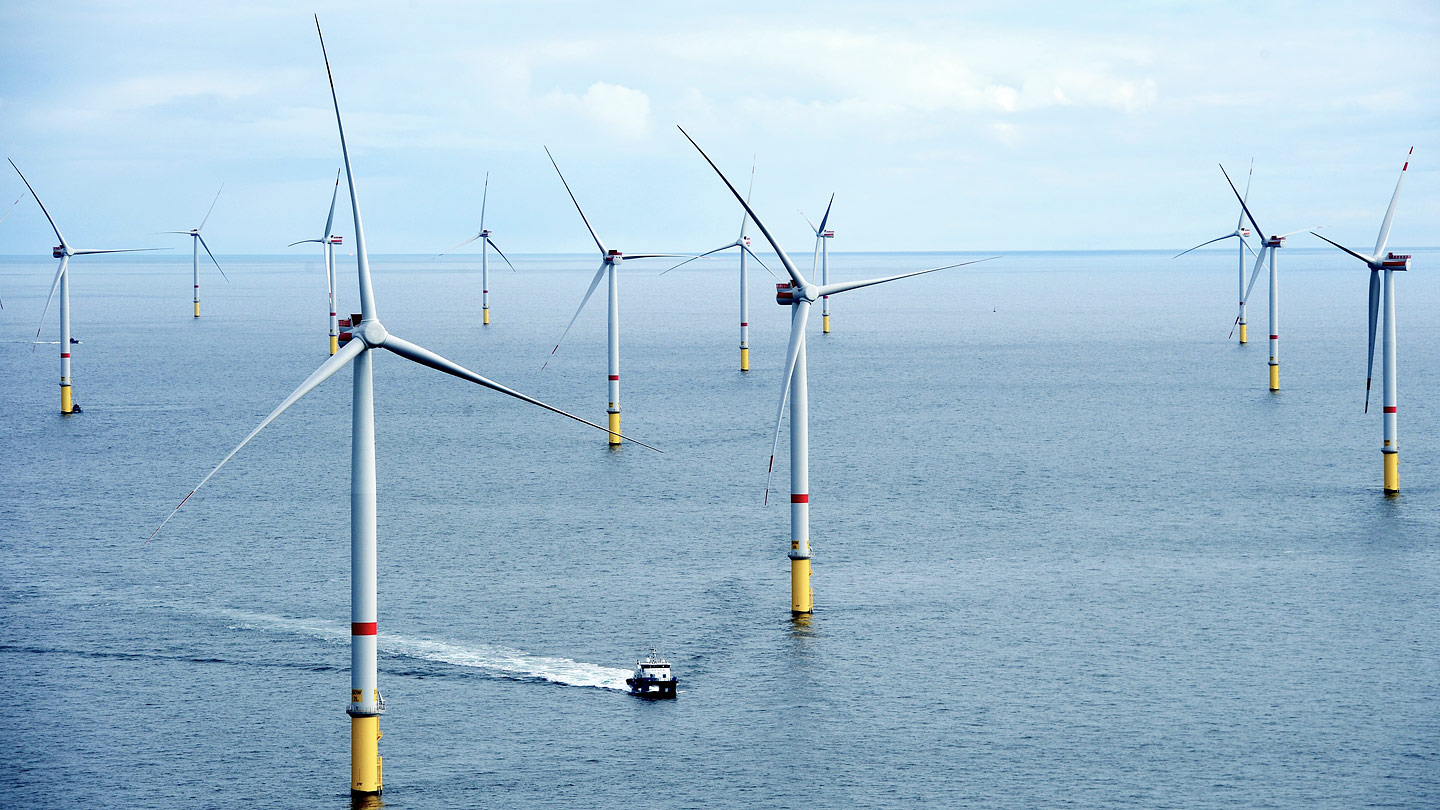 The third biggest goes to Gode Wind 1 and 2 which has a capacity of 582 megawatts and is located north-west of Norderney in the German sector of the North Sea. They are approximately 45km off the coast of Germany, and the two wind farms generate an emission-free power equivalent to the consumption of 600,000 households. This is Germany’s biggest offshore wind farm and marks an important step in expanding Germany’s offshore capacity to 6.5 megawatts by 2020.
The third biggest goes to Gode Wind 1 and 2 which has a capacity of 582 megawatts and is located north-west of Norderney in the German sector of the North Sea. They are approximately 45km off the coast of Germany, and the two wind farms generate an emission-free power equivalent to the consumption of 600,000 households. This is Germany’s biggest offshore wind farm and marks an important step in expanding Germany’s offshore capacity to 6.5 megawatts by 2020.
Gwynt y Mor
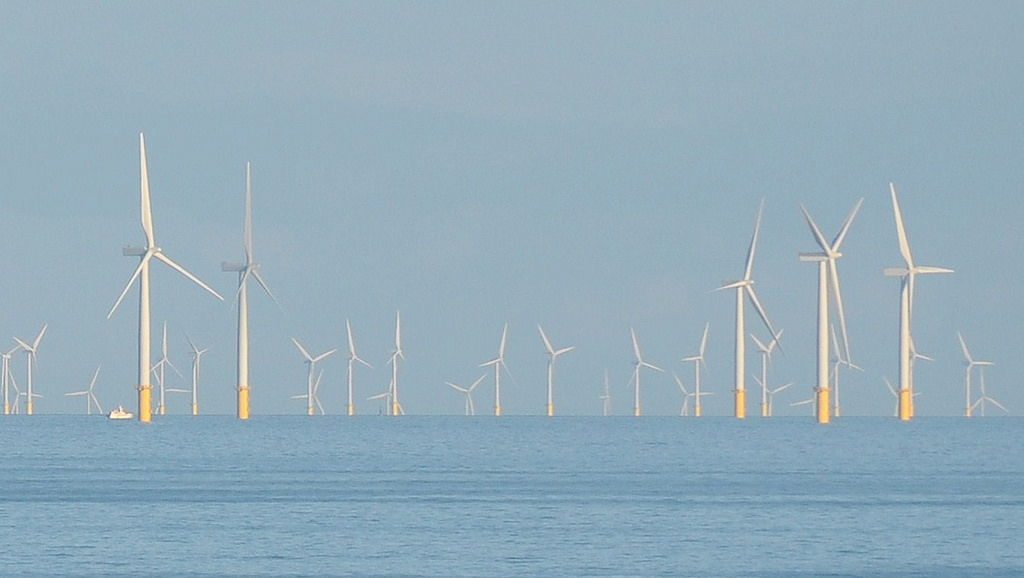 Next up is Gwynt y Mor which is English for Sea Wind and has a capacity of 576 megawatt. It is located 14 kilometers off the coast of North Wales and has 160 wind turbines of 150 meters (490 ft) tip height. They generate enough energy each year to power around 400,000 homes, which prevents the release of about 1.7 million tonnes of carbon dioxide every year. An interesting fact about this wind farm was when they were building they found unexploded bombs from the World War II times in the seabed near the site of the wind farm. RWE disposed of the three unexploded ordnance devices with the help of 6 Alpha Associates.
Next up is Gwynt y Mor which is English for Sea Wind and has a capacity of 576 megawatt. It is located 14 kilometers off the coast of North Wales and has 160 wind turbines of 150 meters (490 ft) tip height. They generate enough energy each year to power around 400,000 homes, which prevents the release of about 1.7 million tonnes of carbon dioxide every year. An interesting fact about this wind farm was when they were building they found unexploded bombs from the World War II times in the seabed near the site of the wind farm. RWE disposed of the three unexploded ordnance devices with the help of 6 Alpha Associates.
Greater Gabbard
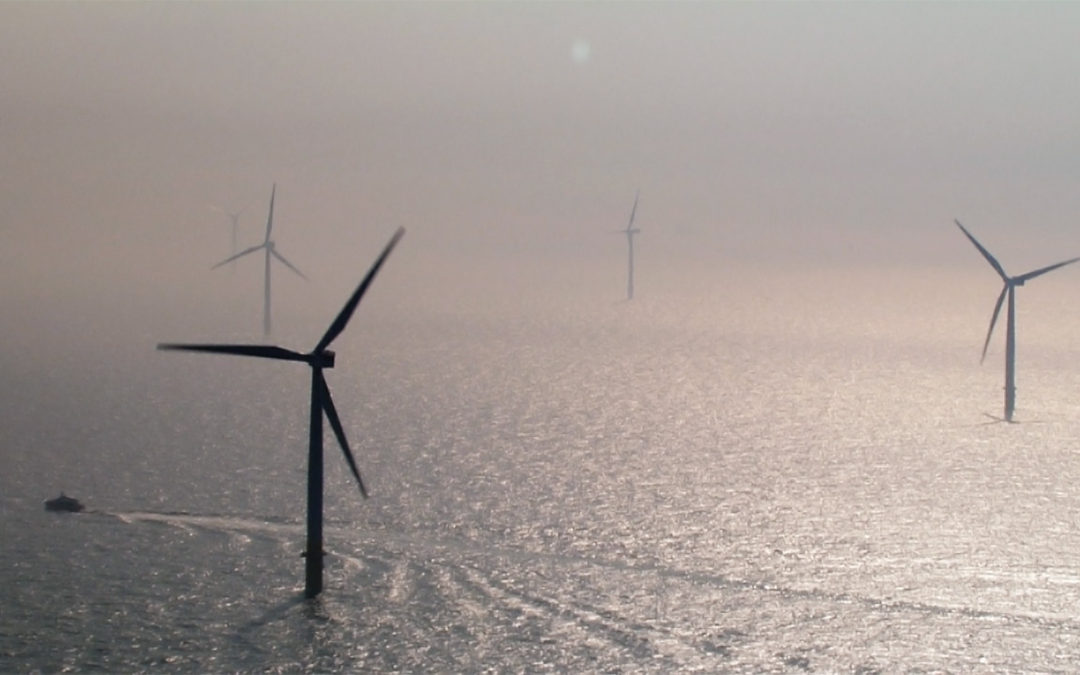
Greater Gabbard is our final wind farm which is located 23 kilometers off the coast of Suffolk in England. It has a capacity of 504 megawatts and has 140 turbines, each turbine has a production capacity of 3.6MW and is 170m tall with a rotor diameter of 130m.
The farm is capable of providing enough renewable energy to supply around 530,000 homes each year. It will also offset carbon emissions of up to one million tonnes each year. Greater Gabbard will contribute 5% of the UK’s 2010 renewable energy target of 10%. This target is raised to 20% by 2020 and 60% by 2050.
Over the past decade the use of wind turbines has increased dramatically to more than 25% with experts saying if this growth continues by 2050 one third of the worlds electricity needs will be fulfilled by wind power. With over two hundred thousand wind turbines operating worldwide today this doesn’t seem like it will be a far off reality.
Want to find out more about how our adhesives can help why not come along to our stand at the JEC World Show in Paris at Hall 5, stand C67 from 6th to 8th of March 2018. Of if you can’t wait that long get in touch with one of our sales team from the contact bellows.
May be of Interest
http://www.tensorglobal.com/blog/190/
http://www.tensorglobal.com/blog/189/
Contacts
E-mail - sales.uk@quin-global.com
Telephone – 0845 381 2233
Social channels
Website - http://www.tensorglobal.com/